Last Updated on November 14, 2023
Cleaning toilets is labor-intensive, and sometimes special cleaning agents are needed to remove stubborn stains and dirt. Muriatic acid (HCl) is one of these highly reactive forms of hydrochloric acid, which is helpful in toilet cleaning applications.
But can you use muriatic acid to clean a toilet safely? Muriatic acid works well for cleaning toilets, but one must proceed cautiously. Remember that this cleaning method comes with potential risks and demands extra care.
With its potent cleaning power, muriatic acid can save you a lot of scrubbing time. But it also carries serious dangers. In this discussion, we’ll explore how to stay safe when using muriatic acid for toilet cleaning and identify the advantages of doing so.
How Can You Use Muriatic Acid to Clean Toilets: In Steps
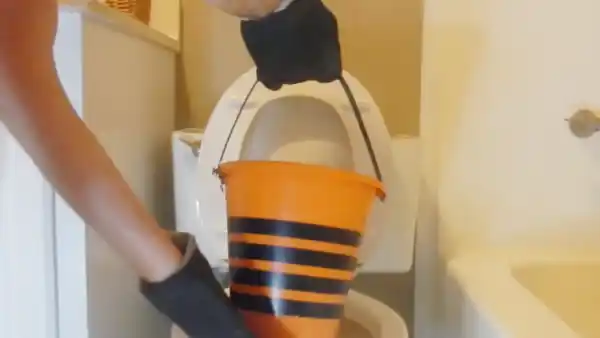
Muriatic acid is often used to clean and disinfect toilets, tubs, showers, driveways, and other outdoor surfaces. Here’s how to clean toilets with muriatic acid safely and effectively:
Step 1: Put on Protective Gears
Before beginning any cleaning project with muriatic acid, you must put on the correct protective gear. This includes safety goggles or glasses (with side shields), gloves explicitly made for chemical usage, long pants, closed-toe shoes, and a long-sleeved shirt or jacket.
It is also essential to wear an N-95 respirator mask when using muriatic acid indoors to prevent inhalation of the fumes released by the product.
Step 2: Preparing the Space for Cleaning
To ensure the maximum effectiveness of your toilet cleaning efforts with muriatic acid, you should take the time to thoroughly prepare your cleaning space before starting. Remove any rugs or items in contact with the floors or walls where the muriatic acid will be applied.
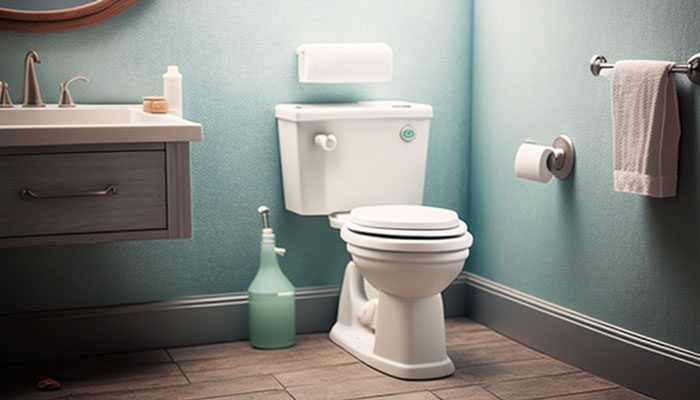
Ensure all windows are open for ventilation and set up fans to increase airflow throughout the space. Also, cover any surfaces that could be damaged by the acidic properties of the cleaner, such as wood flooring or furniture, with plastic sheeting or tarps before beginning your cleaning project.
Step 3: Carefully Measure the Cleaning Solution
Now mix one part of muriatic acid with five parts of water in a well-ventilated area while wearing protective gear according to step one above. Never mix more than one part muriatic acid per five parts water, as this can weaken the potent properties of the cleaner.
To get this ratio correct, you must measure each ingredient carefully using separate measuring cups or spoons before mixing them in a container made from non-reactive materials such as stainless steel or glass.
Make sure not to mix more than you need for a single application, and store any leftover solution safely in an airtight container away from children or pets.
Step 4: Applying Muriatic Acid Solution to Toilet Bowl
Gently pour the acid solution into the toilet bowl until it’s full. Be sure to fill the right amount! The acid should be able to move around freely in the bowl.
Let the acid solution sit in the bowl for two to three hours before moving on to the next step. This will allow enough time for it to properly break up any residue or buildup within the toilet bowl.
Step 5: Scrubbing Away the Remaining Residue
After two to three hours have passed, use a toilet brush or scrubber with an abrasive surface and begin carefully scrubbing away any remaining residue from the walls of your toilet bowl. Make sure you use a brush specifically made for cleaning toilets.

Regular household brushes can be too abrasive and could scratch your porcelain toilet bowl. Take care not to splash any muriatic acid solutions onto yourself or your surroundings as you scrub away residue.
Step 6: Flushing Out Toilet Bowl Again & Cleaning Up
Once all residue has been removed from the toilet bowl, flush twice with plain water to remove any remaining traces of muriatic acid from the inside and pipes connected to it.
To ensure you’re as thorough and safe as possible, take some warm water mixed with soap and scrub down all surfaces that may have been affected by the muriatic acid. You’ll want to be especially careful when cleaning any ceramic tiles, acidic solutions like this can cause discoloration easily.
Are There Any Potential Dangers of Using Muriatic Acid to Clean Toilets?
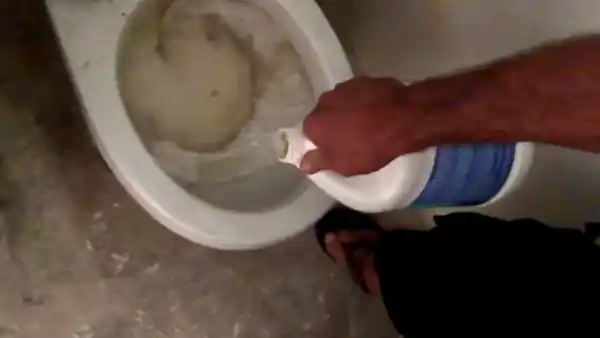
Muriatic acid, or hydrochloric acid, is a widely used chemical in the home for toilet cleaning and other purposes. It has many beneficial uses, but it also comes with some very real dangers. This acid can be highly corrosive to skin, eyes, and even clothes if not appropriately handled.
Inhaling fumes from muriatic acid while cleaning toilets can cause severe respiratory issues that range from irritation of the lungs and throat to more serious health risks such as bronchitis or pulmonary edema.
The liquid form of muriatic acid can cause severe burns on contact and even penetrate through clothing. Even low concentrations of the liquid form can cause permanent damage if not rinsed off immediately with copious amounts of water.
Users should take extreme caution when using muriatic acid (HCl) to clean a toilet bowl and wear protective gear such as safety glasses, gloves, and breathing masks to avoid potential harm. Also, proper ventilation should be present in the room where muriatic acid is used to prevent inhalation of vapors.
Spills should be immediately neutralized with either baking soda or ammonia solution, followed up with a thorough rinsing of the affected area with water. It is also important to never mix muriatic acid with other cleaners like bleach, as this could create hazardous toxic fumes.
How Often Should Muriatic Acid be Used for Cleaning Toilets?
Muriatic acid should be used to clean toilets at least once a week to ensure that the bowls stay clean and free from bacteria and dirt build-up. This will help keep the toilet free of any build-up or accumulation that could clog pipes and plumbing fixtures and cause unpleasant odors.

Using this type of solution sparingly is essential as it can damage the porcelain on the toilet if used too frequently. When using muriatic acid, always follow directions on the bottle carefully and use personal protective equipment if necessary.
What Should You Not Do With Muriatic Acid When Cleaning a Toilet?
When cleaning a toilet with muriatic acid, avoid using metal scrappers, screwdrivers, or other tools to attempt to dislodge any deposits. These tools can scratch the surface of a toilet bowl and leave it susceptible to further damage from the acid.
Also, these tools may cause some of the debris to get stuck in hard-to-reach places, which may be difficult to remove without professional assistance.
Instead, scrubbing vigorously with a brush or other soft material is more effective for removing deposits from the surface of the toilet bowl without causing potential damage.
Can You Use Muriatic Acid to Clean the Outside of a Toilet Bowl?
Using muriatic acid on the outside surface of a toilet bowl is not recommended. The harsh chemicals within the product can corrode materials such as metal and plastic, which make up many components within modern toilets.
Only use this acid when the buildup inside an area has become too difficult to remove, such as inside toilet bowls. When attempting to clean surfaces outside of a toilet bowl, it is best practice to use milder detergents or solutions to avoid damaging important components installed by plumbers during installation.
Does Muriatic Acid Effectively Disinfect a Toilet Bowl?
Yes, muriatic acid is an effective and powerful disinfectant for cleaning the toilet bowl. It is a strong mineral acid commonly used for cleaning and disinfecting surfaces such as tiles, grout, brickwork, and other hard surfaces.
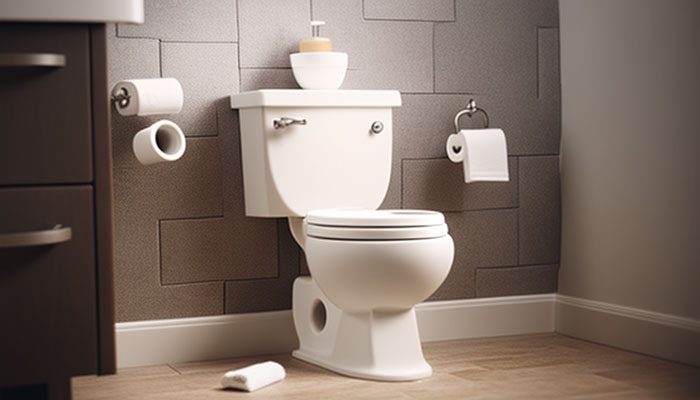
This acid can also be used to remove rust deposits inside toilet bowls. The robust nature of muriatic acid means that it can thoroughly clean the inside of toilets and ensure that it remains hygienic and free from harmful bacteria.
Does Muriatic Acid Clean Brown Stains From the Toilet Bowl?
Yes, muriatic acid can effectively clean away brown toilet bowl stains inside a toilet bowl. This is because muriatic acid has properties that allow it to dissolve organic matter, such as dirt, soap scum, grease, and rust, with ease.
Brown stains on the inside of the toilet are commonly caused by accumulated dirt and rust, which has built up over time. When applied to these areas using a brush or cloth, muriatic acid’s strong acidic nature helps break down and remove these stubborn residues easily.
Will Muriatic Acid Eat a Porcelain Toilet Bowl?
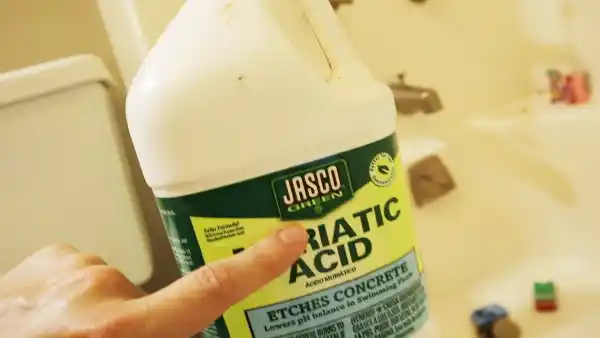
No, while muriatic acid will effectively remove rust deposits and other debris from porcelain surfaces, there is no risk of it causing any damage to the porcelain itself. In fact, due to its robust nature, muriatic acid can help restore the original color and shine of porcelain fixtures over time if used regularly.
It should be noted that care should be taken when using this product on delicate surfaces like porcelain to avoid any potential discoloration or damage.
Will Muriatic Acid Hurt Toilet Plumbing?
Muriatic acid can cause damage to surfaces such as metal or concrete when used in high concentrations. In lower concentrations, it can be safely used on toilet plumbing systems.
Although PVC and other materials used for drain lines are usually not affected by lower concentrations of muriatic acid when diluted with water, it is essential to note that this varies depending on the type of plastic and its age.
Older plastics may be more susceptible to damage and should not be left in contact with muriatic acid for prolonged periods. For best results, use a solution of no more than 1 part muriatic acid to 5 parts water, and never leave the solution in contact with any surface longer than necessary.
Is it Safe to Mix Muriatic Acid With Other Toilet Cleaning Products?
No, mixing Muriatic Acid (HCl) with other toilet bowl cleaner ingredients is unsafe. When mixing different chemical compounds, some components may react violently or produce toxic fumes, which can be very dangerous.
Also, some compounds may become ineffective after mixing with another product, thus defeating their purpose entirely.
Even if there is no risk of reaction between two products, combining them may result in a substance having properties different from either component alone, so caution should always be exercised when combining chemicals.
Keep Your Toilet Clean, But Beware of Muriatic Acid’s Strength
Using muriatic acid for cleaning toilets is an effective way to get rid of hard-to-remove toilet stains and dirt, but proceed with caution due to its highly reactive nature.
It’s essential to understand the risks associated with using this powerful agent so that you can adequately protect yourself while still getting your toilet clean. Be sure to follow all safety protocols when using muriatic acid and never mix it with other products, as this could cause an unsafe reaction.
With proper precautions taken, muriatic acid can be safely used for removing stains from toilet bowls and other surfaces without causing any damage to plumbing or porcelain fixtures.

